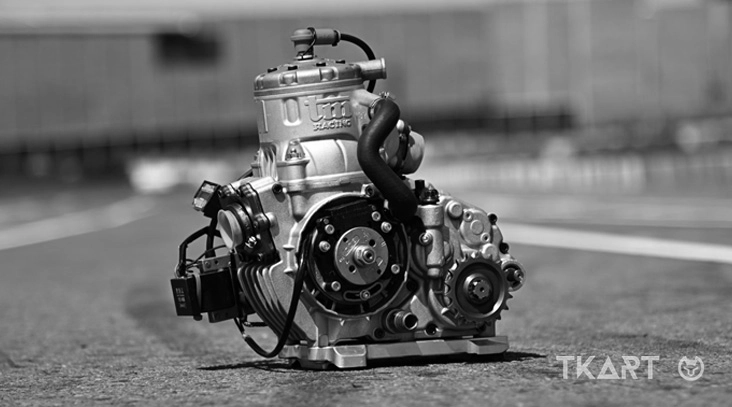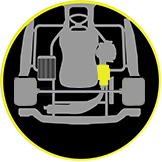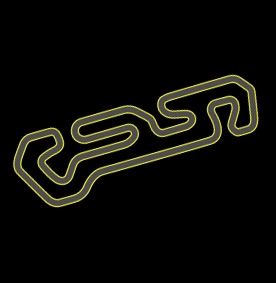HIGH GEARS / LOW GEARS
Of course, not all gears are the same. As a result, gear changes are not either. Changing gears at the highest speeds is generally the easiest, regardless of the type of transmission (traditional sequential or seamless). In fact, in this condition the "gearbox-wheel" unit has a high speed and allows the consecutive gears to have more similar rotation speeds, an aspect that facilitates the possibility of shifting into gear. Moreover, although experienced drivers do not encounter great differences in this sense, it is objective that gear changes at high speeds allow a lower loss, in terms of lap time, than in gear changes at low speeds. When the kart is launched at high speed (despite having to deal with greater aerodynamic resistance, to learn more about this read "Technique | The aerodynamics of a kart"), the stopping in the increase in speed, in conjunction with the "detachment" of the throttle, is in a lower percentage than what happens at lower speeds. In low-speed gear changes (when you go from 1st to 4th, for example) other factors come into play that contribute to making this type of shift more "expensive" in terms of lap time, such as demanding acceleration, tight corner radii and sudden changes of direction. This is precisely why the coordination necessary for a driver when changing gears, between 1st and 4th gears, greatly affects final performance.
DRIVER COORDINATION AND KART BALANCING
In relation to sequential (non-seamless) gearboxes, the absence of electronic aids means that each kart driver develops precise automatisms to change gears correctly and in the shortest possible time. When the engine approaches optimum speed, within a fraction of a second, you must: lift your foot off the accelerator, make a quick and firm movement of the gear lever and depress the throttle fully again. Precision and timeliness in these actions are essential to maintain the flow of power with the least possible interruptions to the benefit of speed and acceleration of the kart. But that's not all: all this also affects the overall behaviour of the chassis. In fact, every "detachment" of the throttle affects the stability of the kart, if it is on a bend. Lifting the foot off the accelerator generates an inevitable transfer of weight towards the front with a consequent, albeit minimal, instability of the kart. This is contrasted by the subsequent lunge action on the accelerator pedal which, on the other hand, involves a transfer of load to the rear, generated by the considerable power of a Shifter engine. All this has inevitable consequences on the torsion of the body and therefore, as mentioned, on the stability of the kart. Of course, knowing how to better manage the coordination of all these movements reduces these phenomena and increases the effectiveness of driving with the same set-up. Obviously, all these aspects become secondary and irrelevant when you are driving a Shifter kart equipped with a seamless gearbox which, not forcing you to release the throttle when changing gears, does not require the coordination of the driver or the consequent load transfers.
ENGAGING THE GEAR
Gear changes, both in sequential and seamless gearboxes, takes place by means of a lever, generally positioned in the rear right area of the steering wheel (there are also paddle shifter systems, but they are less common than in other motorsport categories; to learn more, we recommend reading "Must Have | 5 steering wheel changes for the kart") and requires a precise and fluid technique. In fact, during "upward" gear changes, i.e. when shifting to higher gears, the driver must make sure to select the optimal moment to change gear, which (although varying according to the driving situation and the type of engine) must generally take place when the engine speed is high and the load on the transmission tends to drop due to the normal power delivery curve. At that precise moment, the driver (in addition to lifting his foot off the throttle, in the case of sequential changes, and then putting it down again when the gear change is complete) must shift to the next gear by making a rapid and decisive movement of the lever, pulling it towards him/her. The same goes for the "downshifting" gear changes, with the difference that the lever is pushed forward; In addition, you do not have to manage the accelerator pedal which remains undepressed throughout the phase, as you are decelerating.
THROTTLE "DETACHMENT"
The interruption in torque transmission, caused by the partial (or total) release of the accelerator pedal by the kart driver (commonly known as the "detachment" of the throttle), plays a fundamental role in the process of changing gears (which is carried out without the use of the clutch) in a Shifter kart engine with a traditional sequential gearbox. As already mentioned, however, this action is not necessary with seamless changes. The "detachment" is used to allow the gears of the gearbox to generate less pressure between their meshed teeth, so that the gears can move on the shafts, allowing shifting. The "detachment" varies according to the gear to be engaged, in the sense that it must generate a sufficient loss of power to allow the movement of the gears and the various components in the gearbox. Undoubtedly, however, the interruption of the torque transmission has a significant impact on the overall performance of the kart, since, during the engagement of the gears, the torque is momentarily interrupted, negatively affecting the acceleration and speed that the kart has at that precise moment.
THE GEAR CHANGE OF A SHIFTER ENGINE
In the world of Racing karts, Shifter engines (especially those approved by FIA Karting - to learn more about them read "Dossier | FIA approvals: what they are, what they are for, how long they last... The ultimate guide!" -, therefore intended for use in the KZ2 and KZ classes) are equipped with sequential transmissions, with a progressive succession of gears. It means that it is not possible to change gear, for example, from 5th to 3rd gear (and vice versa) without engaging the 4th, as it is possible to do, instead, using a manual transmission of a common car. In addition, in accordance with the provisions of Article 9.10.1 of the CIK-FIA Technical Regulations, these engines must have a manual gearbox mechanism, with a fully mechanical drive. These are, therefore, transmissions that have a technologically advanced structure which, in addition to the possibility of changing gears without having to use the clutch, allow precise and very quick gear changes, both by shifting into higher gear and downshifting. Precisely in this sense, the two main factors used to evaluate the performance of a gearbox are the precision of movement of the gears, as well as the internal kinematics, and its speed. In addition to the classic sequential gearboxes, seamless gearboxes were added, introduced first in the world of motorcycling and now also in karting: they allow you to further speed up the timing of gear changes thanks to their particular operating logic that allows you not to have to release the accelerator pedal when changing gears "upwards”.
 Exclusive Content
Exclusive Content



